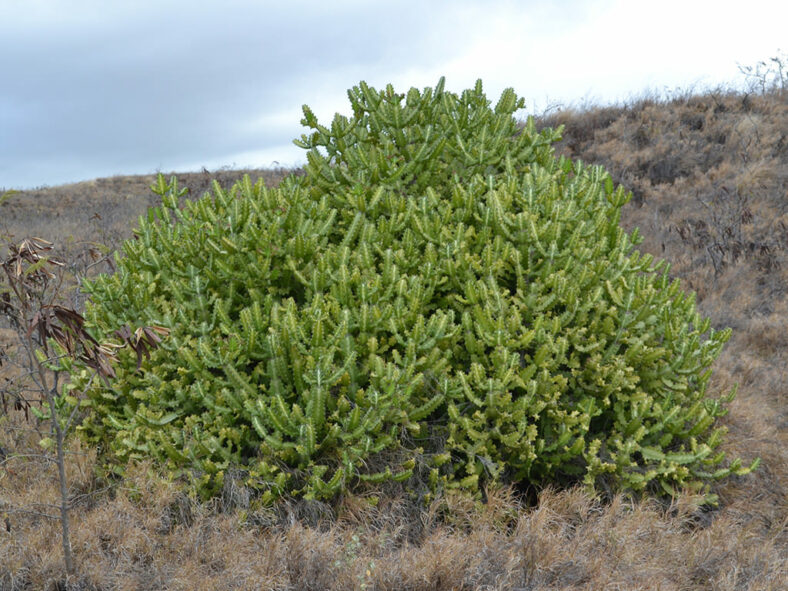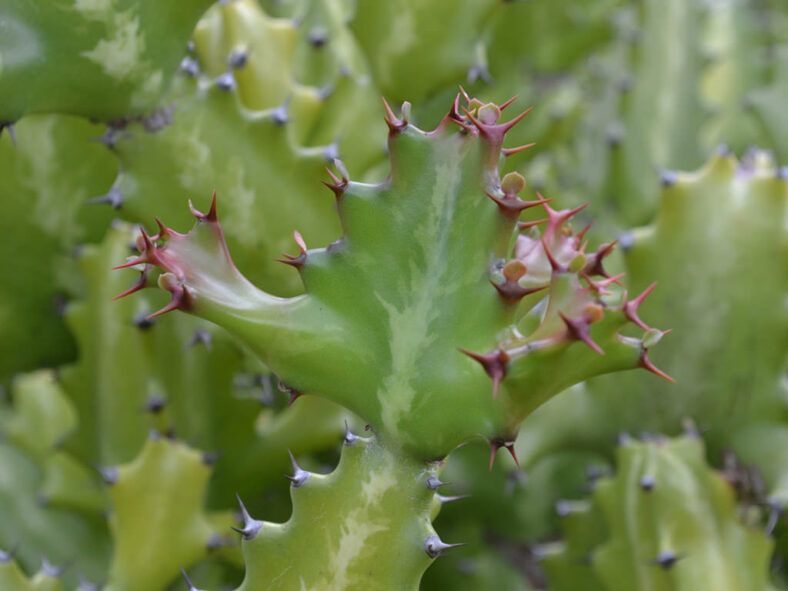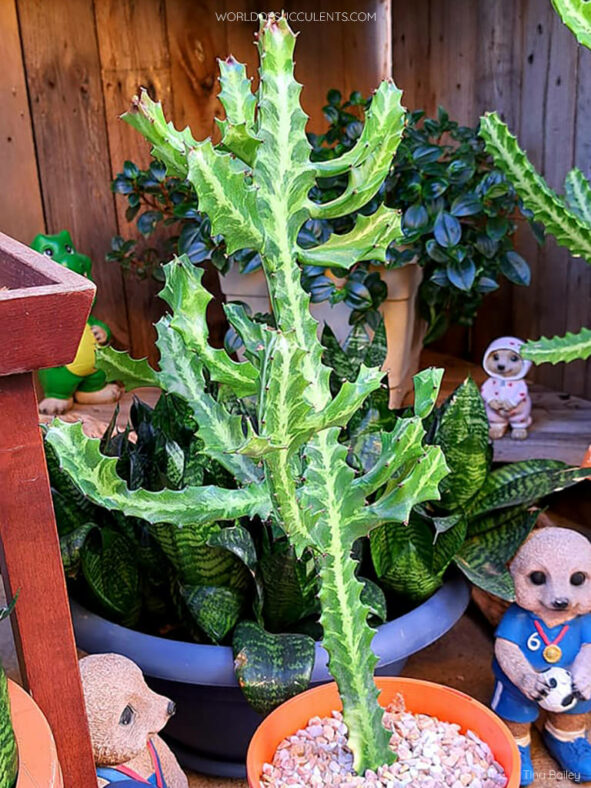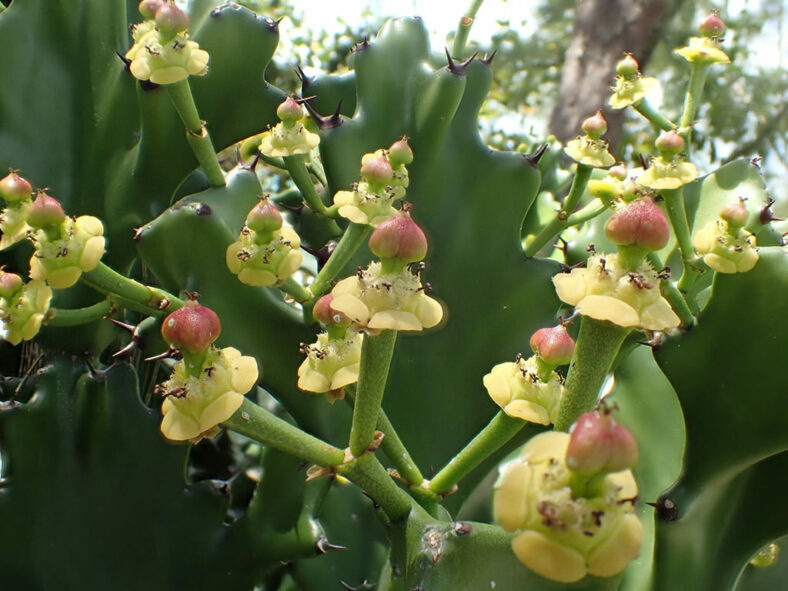Euphorbia lactea is a popular ornamental plant grown in homes and gardens despite never flowering in cultivation.
Scientific Name
Euphorbia lactea Haw.
Common Name(s)
Candelabra Spurge, Dragon Bones, Dragon Bones Tree, Elkhorn, False Cactus, Frilled Fan, Hat Rack Cactus, Mottled Spurge
Scientific Classification
Family: Euphorbiaceae
Subfamily: Euphorbioideae
Tribe: Euphorbieae
Subtribe: Euphorbiinae
Genus: Euphorbia
Etymology
The specific epithet "lactea" (pronounced "lak-TAY-uh") means "milky" and refers to the milky latex that is secreted when this species, like all other Euphorbias, is injured.
Origin
Euphorbia lactea is native to Sri Lanka but has become naturalized in tropical and subtropical regions worldwide.
Description
Euphorbia lactea is a succulent shrub or small tree with distinctly 3- or 4-angled branches with spines along the ridges. It can grow up to 16.4 feet (5 m) tall, with a basal stem that reaches 8 inches (20 cm) in diameter, branching from immediately above the base. The branches are green with a pale center and often have ornamental, marbled, whitish and lime-green markings. The youngest branches can measure up to 7 inches (17.5 cm) long and 1.2 inches (3 cm) thick, with spine shields 0.4 to 0.6 inches (1 to 1.5 cm) apart, bearing pairs of short, blackish to brown spines. The tiny leaves are rarely present, appearing at the stem tips in summer but quickly falling off, leaving the plant leafless for most of the time.
The cyathia (false flowers) are clustered along the stem ridges and have 4 or 5 yellow-green glands on the edge. They appear in winter and spring, usually only in the wild. The fruits are capsules with three locules and numerous seeds.

Forms of Euphorbia lactea
Cultivars of Euphorbia lactea
How to Grow and Care for Euphorbia lactea
Light: Providing your Euphorbia lactea with ample sunlight is crucial for optimal growth. Place it near a sunny window or move it to your balcony or garden during the warmer months, gradually increasing sun exposure to avoid sunburn.
Soil: Use a well-draining soil, either a commercial potting mix specifically formulated for succulents or a mix you create yourself.
Temperature: While high summer temperatures are not a problem, low winter temperatures can damage or kill your plant. Euphorbia lactea grows best in USDA Plant Hardiness Zones 10a to 11b, with average minimum winter temperatures ranging from 30°F to 50°F (-1.1°C to 10°C).
Watering: From spring to fall, water the plant when the top inch (2.5 cm) of soil feels dry. Reduce watering in winter and give it just enough water to prevent wilting. During the warm season, the best time to water is in the evening.
Fertilizing: To ensure the potted plant receives sufficient nutrients, apply a balanced 10-10-10 NPK fertilizer diluted to 1/4 strength weekly during the growing season.
Repotting: Although your Euphorbia lactea does not need to be repotted often, it will benefit from repotting when it outgrows its pot. The repotting is best done in early spring at the beginning of the growing season. Wear gloves, protective clothing, and appropriate eye protection when handling this plant.
Propagation: While it rarely blooms in cultivation, it is usually propagated by stem cuttings. The best time to take cuttings is in spring or summer.
Learn more at How to Grow and Care for Euphorbia.
Toxicity of Euphorbia lactea
Euphorbia lactea produces a poisonous white milky sap that may cause burns or irritation if it comes into contact with the skin or eyes. Therefore, it is best to keep this plant out of the reach of children and pets.
Links
- Back to genus Euphorbia
- Succupedia: Browse succulents by Scientific Name, Common Name, Genus, Family, USDA Hardiness Zone, Origin, or cacti by Genus
Photo Gallery
Click on a photo to see a larger version.


